Hue Imperial City is a great architectural accomplishment of national style. Coming to Hue’s Imperial City in the hearts of tourists will generate nostalgia and spark an interest in the capital’s vast history. If tourists are interested in visiting an historic land, let’s study more so that you may have a comprehensive journey with our Vietnam Pilgrim Travel Company.
1. The address of Hue Imperial City
Hue Imperial City is a relic of the Hue Imperial Population, which was erected during the reign of the Nguyen Dynasty. The Hue complex monument is located at 23/8 Street, Thuan Hoa Ward, Hue City, Thua Thien Hue province, near the beautiful and lyrical Huong River.
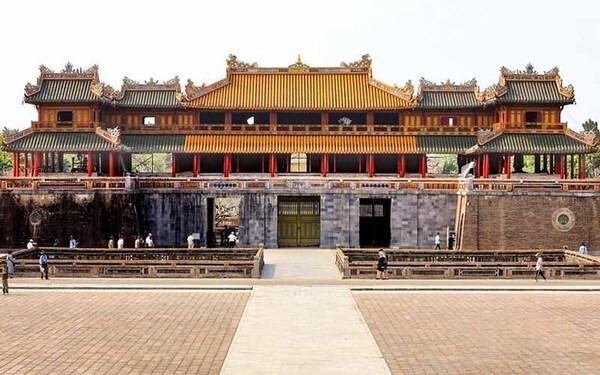
2. The Hue monument complex—history of the building and eternal value
Construction began in the early nineteenth century and lasted throughout the first half of the twentieth century. The architecture of the city maintains numerous distinct cultural impressions from the rule of the Nguyen dynasty hundreds of years ago.
It is reported that in 1803, during the reign of King Gia Long of the Nguyen dynasty, he was captivated by the lyrical landscape, dreams, and tranquil atmosphere of Hue, so he planned and then ordered the construction of the capital. The Great Metropolis of Hue has been built after 30 years of hard effort and painstaking investment in every feature of the city.
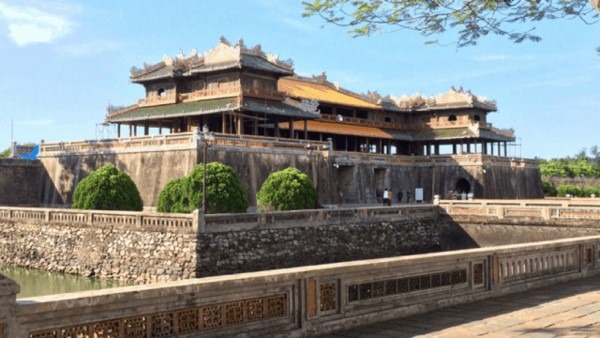
Hue Imperial City is a spectacular structure on the grandest scale in the history of Vietnam’s capital. The Great Imperial City took a long time to build, requiring the devotion of tens of thousands of people. The architectural work includes dugouts, filling rivers, migrating, and shifting tombs. The amount of rock quarried to support this massive structure is believed to reach millions of cubic meters.
Coupled with careful investment is the beauty blended with nature to create a sense of relaxation and calm, as well as the sustainability of Hue Citadel before the effect of time’s degradation process.
Perhaps because of its unique architectural values and historical significance, the Imperial City was designated as a World Cultural Heritage Site by UNESCO as early as 1993.
3. The original includes a tour of the Hue complex’s monuments
According to the introduction of Hue Imperial City, it was separated into two rounds of the city, including Thanh Citadel, with the meaning of where the monarch put the court to work, and Tu Cam Thanh (which could be translated as Forbidden City), as the king’s and royal lineage’s place of life.
Many requirements set specialized tasks in each stratum of the fortress. In general, the Imperial Citadel is made up of two important structures: Ngo Mon Gate and Thai Hoa Palace. The Forbidden City is divided into several sections, including Dai Cung Mon (Great Palace Gate), Ta Vu and Huu Vu, Can Chanh Palace, Thai Binh Tower, and Dien Tho.
It is not by coincidence that the Hue Complex Monument is constantly on the list of tourists while visiting the lovely country of Hue, but it appears to be owing to the distinctive beauty and weirdness that each location presents in the depth of memory.
3.1. The image of Hoang Thanh court’s (Thanh Citadel) original beauty
-
Ngo Mon Gate
The Ngo Mon is often referred to as the Ngo Mon Gate. This is the main gate outside of the citadel’s four entrance gates. This project is said to be indicative of the Imperial Palace of Hue as a whole. The gate is built in many tiers. A system of pristine, shimmering moats surrounds the Ngo Mon entrance. The gate is meticulously carved with features and designs, making it one-of-a-kind and no less magnificent.
Above the Ngo Mon Gate is the Tali-constructed Ngu Phung Floor, which consists of two stories with nine sets of roofs designed to house some of the Nguyen dynasty’s most important festivities.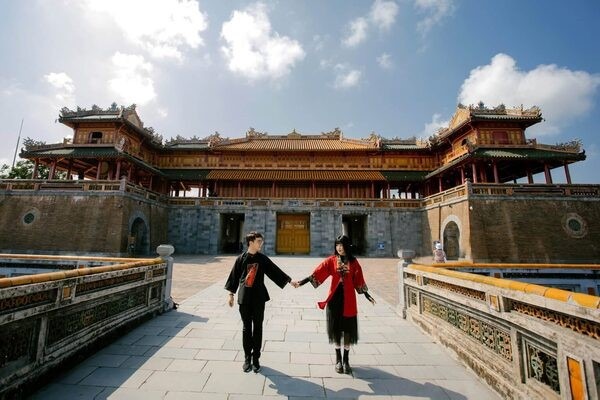
The Ngo Mon Gate has a total of five entrances. The main entrance is situated amid the king’s promenade. The two gates close to it are pathways for martial arts authorities. The final two-gated section serves as a conduit for warriors, elephants, and horses to follow the servants and ensure the king’s protection. When standing in Ngo Mon and zooming out towards the extreme south of the Imperial City, tourists may see a portion of the Perfume River gracefully looping around.
It is not only regarded as a representation of the Great Citadel of Hue but this one-of-a-kind work has long been regarded as a particularly superb architectural masterpiece as well as a relic means while witnessing many significant milestones in Vietnamese history.
-
Thai Hoa Palace
Hue Citadel ‘s Thai Hoa Palace is the most significant part of the total structure because it is where major court had a meetings. As a result, it is regarded as an architectural work embodying the Nguyen Dynasty’s great power.
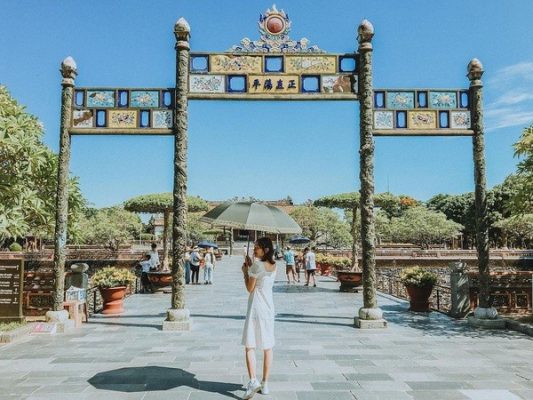
Thai Hoa Palace, as Ngo Mon Gate, has a unique architectural style. Although Thai Hoa Palace is made of lime wood and is characteristic of the architecture of Hue Court’s “double house,” the roof, power poles, and wall are carved in the shape of a dragon twisting gently, inlaid with eye-catching gold.
3.2. The Forbidden City and diversified architectural imagination
- Dai Cung Mon (The Great Palace)
To the South, in the Forbidden City, there is a great entrance called the Great Palace, from which one can see the front of the Thai Hoa Palace. This structure is made completely of wood and shingles. The structure has 5 spaces and 3 doors. The central entrance is devoted to the king. On both sides, two passageways go to Ta Vu and Huu Vu.
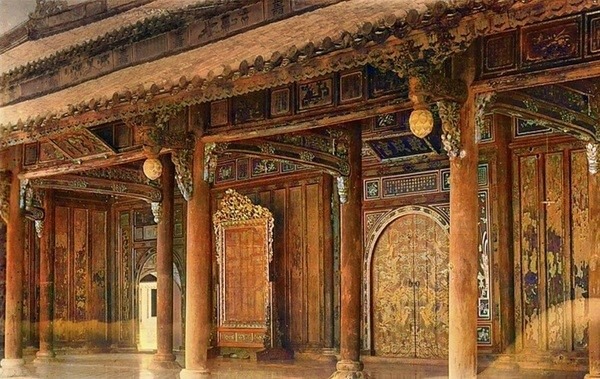
The Great Palace was destroyed during the war. On the other hand,the Hue Monument Conservation Center is continuing to research and restore it.
- Ta Vu and Huu Vu
Two structures, Ta Vu and Huu Vu stand beside Can Chanh Palace. Two structures were constructed to house government servants and martial arts authorities while they prepared for court appearances. It’s also where family contests and feasts take place. The Ta Vu building corresponds to the Mandarin, whereas the Huu Vu building houses martial arts authorities.
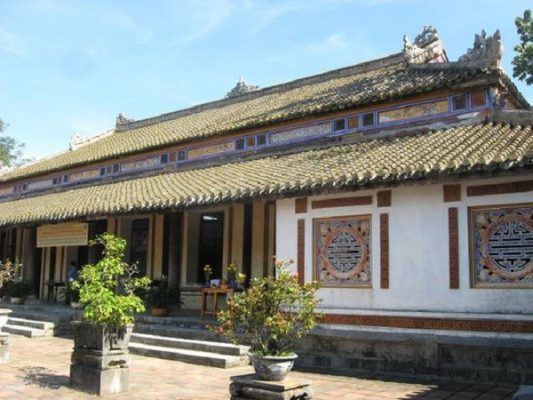
Ta Vu and Huu Vu were fortunate enough to escape the war’s horrors relatively unscathed. Visitors to this architectural site may photograph the anniversary in the Huu Vu building before moving on to the Ta Vu building to see and learn about the treasures on exhibit place.
- Can Chanh Palace
*In a north-south direction, Can Chanh Palace is parallel to Thai Hoa Palace, which is where the dynasty’s ruler meets to debate the main court.
*Moreover, during the rule of the Nguyen Dynasty, Can Chanh Palace was chosen as a setting for welcoming ministers and hosting festivities. Regrettably, by 1947, this mansion had been entirely demolished.
- Thai Binh Tower
King Khai Dinh ordered the construction of the Thai Binh Tower in 1919, and it was completed in 1921. This was utilized for relaxing purposes such as reading books, penning poetry, and reading literature.
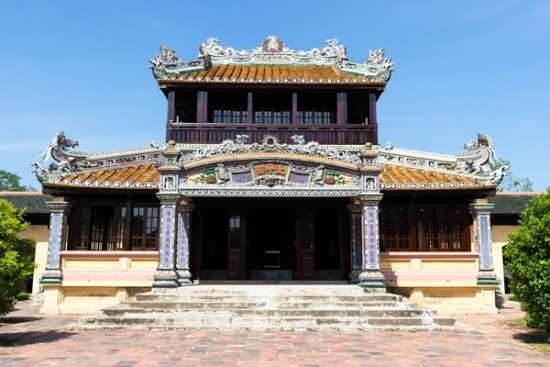
-
Dien Tho Palace
The queen and her grandmothers were kept in the Dien Tho Palace, which was located in the western portion of the Forbidden City. The palace is connected to various smaller buildings by covered passageways, which encompass a total land area of 17,500 m2. It is said to be the largest remaining palace structure in hue. Dien Tho’s architecture remained substantially unchanged when the Nguyen Dynasty fell apart in 1945, however other places were devastated in some reasons.
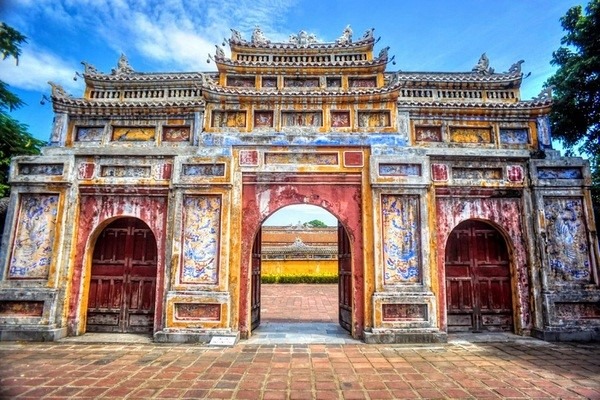
4. The introduction of the Origins cultural festival in Hue Imperial City
The best time to visit is between April and May each year if you want to not only appreciate the colossal appearance of the Hue Imperial but also completely experience other cultural qualities. This is the period of the Hue Festival, which is a unique event and one of Vietnam’s largest.
When you attend the festival, you will have the opportunity to participate in a variety of creative events, as well as see the image of a long dress with hue love, passionately keen Vietnamese people on the night of the Great Citadel of Hue, which is glittering with vividly colored lights.
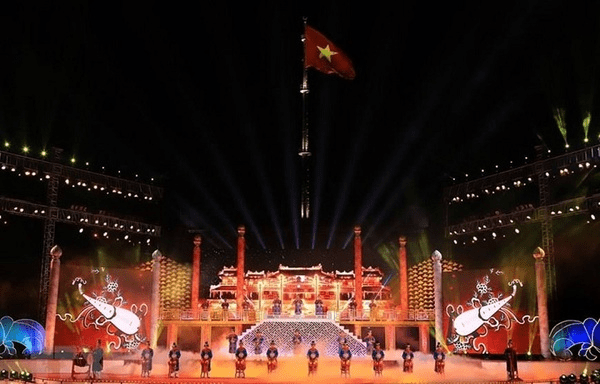
5. Conclusion
When visiting this enchanted area, you should pay a visit to the Imperial City, which is not only a unique antique architectural style but also a cherished historical remnant of the nation.
With these specifics in hand, we wish you a memorable and enjoyable journey.




Bài viết liên quan: